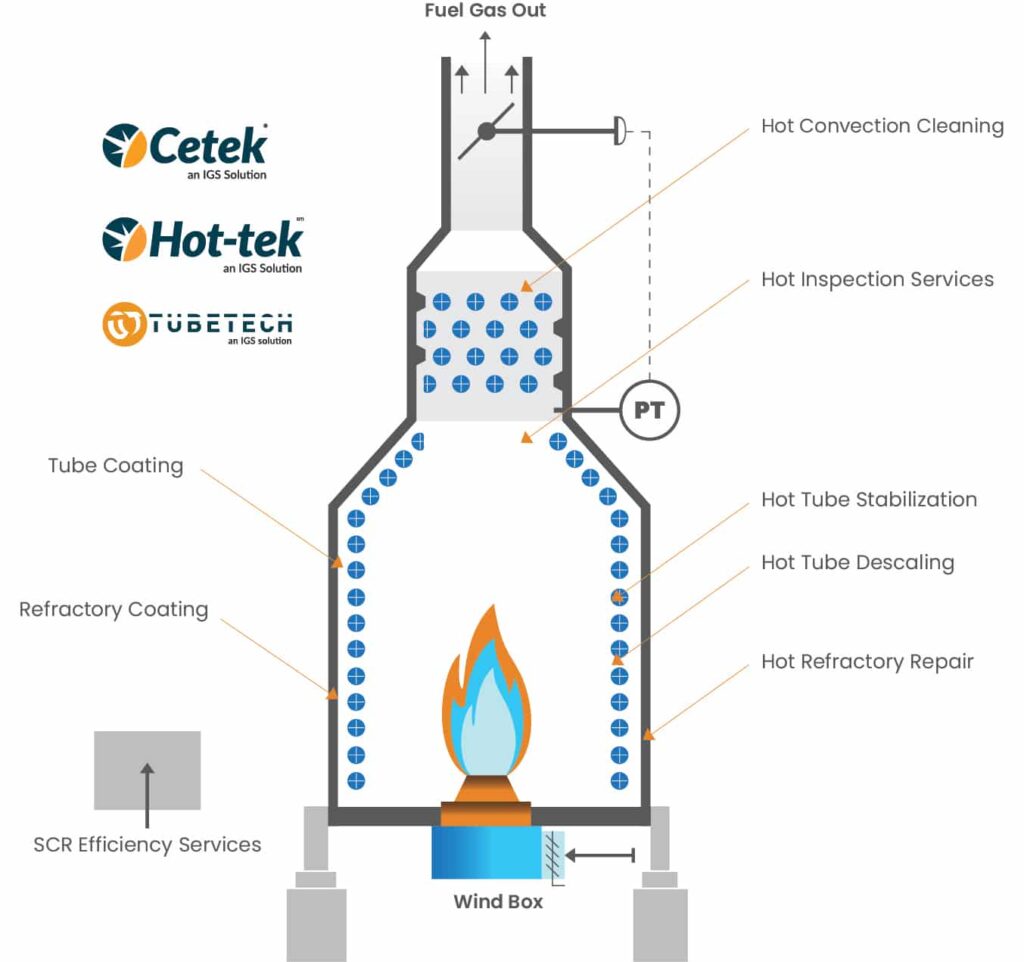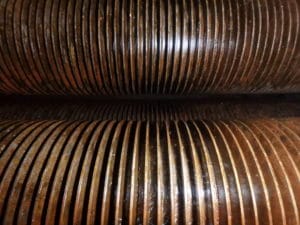How to Cut Emissions & Fuel, and Increase Capacity in Fired Heaters

According to a recent Digital Refining article, fired heaters emit an estimated 400 to 500 million tons of carbon dioxide (CO2) every year, with at least 73% of average refinery CO2 emissions coming from combustion. Refineries and petrochemical plants are under increasing pressure to reduce emissions, while also looking for ways to reduce fuel consumption amid rising fuel prices.
Fired heaters have the greatest running cost in a refinery or a petrochemical site. If any one of these heaters is 1 or 2% inefficient it can consume an additional $1m in fuel over a year or result in millions of dollars in lost revenue. High fuel consumption also translates to high emissions. Units of particular interest include Catalytic Reformers, Steam Methane Reformers (SMR), and Ethylene Furnaces.
This article will discuss solutions to issues in the radiant and convection sections of fired heaters, which affect performance and profitability.
Radiant Section Efficiency
Process fluids are heated in the radiant sections of fired heaters. The fluids travel through steel alloy tubes, which are heated principally by radiant heat generated by burners contained within the refractory lined box. The configuration and condition of the process tubes and the refractory surfaces affect the efficiency of heat transfer in the radiant section.
How does Process Tube Oxidation Occur?
In use, the steel alloy tubes oxidize, and layers of scale grow continuously over time on the external surfaces. The developing scale insulates the tube surface, hindering conductive heat transfer to the process and decreasing radiant section efficiency.
What are the Effects of Process Tube Oxidation?
To overcome the insulating effect, extra heat is needed and firing rate is increased. This results in increased flue gas temperature (bridgewall temperature). Consequently, CO2 and NOx emissions are increased. As scale grows and further increases in firing rate are required, BWT limitations are encountered, and production rates are threatened.
Carburization
An industry trend to operate fired heaters more efficiently, at lower excess oxygen levels, to save fuel and reduce CO2 emissions has increased the potential for carburization of external surfaces of radiant section tubes.
This leads to grain boundary penetration of carbon, carbide formation, embrittlement of the surface, crack formation and loss of metal. The result is a reduced service life of the radiant tubes.
What are the solutions?
Online tube descaling is offered by IGS/ Hot-tek services. This will improve the radiant section heat transfer efficiency and reduce the bridgewall temperature. The effect, however, is temporary since oxidation and scale formation will continue.
Ceramic Coatings for Process Tubes
Cetek high emissivity Ceramic Coatings provide a durable, protective, thin-film layer on the outer surfaces of process tubes, which prevents oxidation, corrosion, and carburization of the metal and maintains the tube thermal conductivity coefficient close to new tube conditions. The coatings may be applied to existing tubes during a shutdown, or to new tubes at a remote facility where surface preparation, coating and curing of the coating takes place.
The average benefit in catalytic reformer heaters is to increase radiant section efficiency by 6.6%, with a corresponding reduction of 6.6% in CO2 emission and approx. 20% reduction in NOx emission.
Refractory Surface Emissivity: Why does it Matter?
A significant portion of the radiant energy interacts with the refractory surfaces. The mechanism of this interaction has an appreciable effect on the overall efficiency of radiant heat transfer. A major factor in determining the radiant efficiency is the emissivity of the refractory surface.
The ultimate radiant heat transfer efficiency is achieved where the enclosure is a black body, where all the surfaces have the maximum emissivity factor of 1.0.
Refractory Ceramic Coating Solutions
Cetek Ceramic Coatings with emissivity values of above 0.9, have been designed specifically to supplement the radiation characteristics of the refractory surfaces. In use, benefits have been realized of up to 5% in radiant section efficiency improvement, with corresponding CO2 emission reduction up to 5% and NOx emission reduction in Ethylene and SMR up to 30%.
Convection Section Efficiency
How Does Fouling Occur?
Fouling occurs when deposits accumulate on the tube or fin surfaces. The burner alone is designed to operate with one part per million airborne particulate. This means that a single burner can pass 2.5 tonnes of debris through a heater in a year, some of which will deposit.
Airborne debris is drawn in from the surrounding environment. In a desert location, dust will make up a large proportion of the waste. If surrounded by agriculture, waste from harvesting will accumulate, and in an industrial location, waste products from surrounding plants will also make up the debris being pulled into the fired heater.
What are the Effects of Fouling?
One of the most significant effects of fouling is an increase in emissions. If fouling is left to worsen and the emissions become excessive, refineries may be liable to pay government fines.
Fouling requires fired heaters to burn more fuel to operate at the desired capacity. Higher fuel consumption results in a higher stack temperature and reduced heat transfer. High operating temperatures cause heat stress on tubes, creating uneven expansion and irregular heat distribution, which can potentially lead to tube failure. The combination of these side effects can cost plants millions of dollars in lost revenue.
Traditional Cleaning Methods
There are two commonly used offline cleaning methods to tackle the issue of fouling: chemical and dry-ice blasting.
Chemical Cleaning
Chemicals can be used when an asset is online, however, if the nature of the fouling is unknown, it is difficult to predict how it will react with certain chemicals. Therefore, chemicals can compound the issue of fouling, creating hotspots in areas that the chemical has not managed to penetrate or even reach at all.
During a shutdown, the refractory lining of the convection section can become saturated with water-borne chemicals which may result in changed high-temperature properties of the refractory, leading to premature failure.
Dry-ice Blasting
Dry-ice blasting can be undertaken during the operation of the unit and is offered by IGS/Hot-tek services. It provides a limited benefit, since accessibility reduces the ability to reach more than 40% of the tube surface area, but often this is sufficient to provide a significant improvement until a planned shutdown.
What are the Solutions?
A comprehensive solution is offered by TubeTech™, an IGS Solution, which uses robotic cleaning systems to clean more than 90% of convection section tube fouling during planned turnarounds.


Conclusion
Fired heaters are a critical piece of equipment for refineries and facilities around the world. With rising fuel costs and stringent emissions legislation, it is becoming increasingly important to ensure that mission critical assets, particularly fired heaters, are performing efficiently and at full capacity.
Maintaining these assets regularly and thoroughly will maintain output, increase asset life, reduce the likelihood of unplanned outages, reduce stack temperatures and emissions, and deliver a significant ROI.
